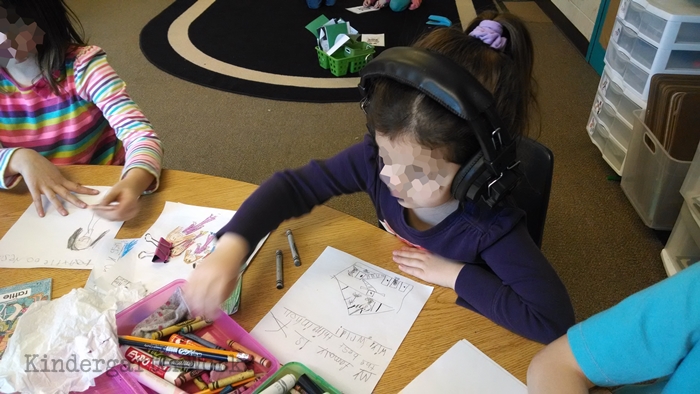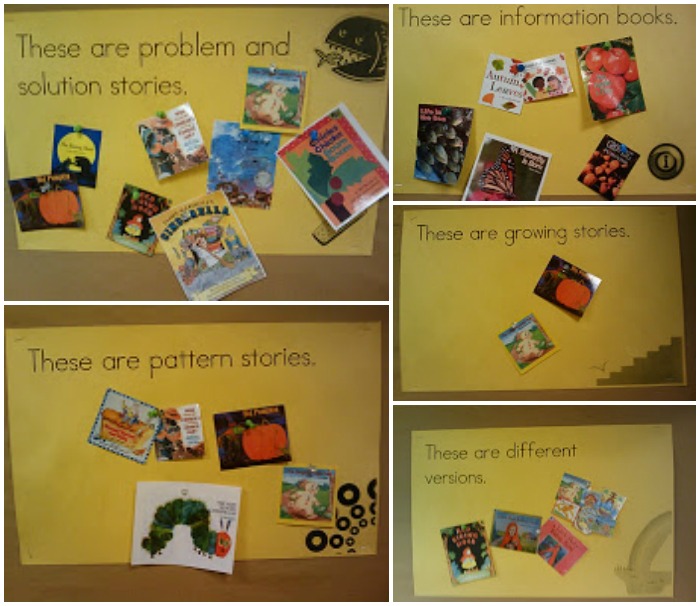How to Empower Kindergarten Writers By Reading Aloud
Teach kindergarten writers how to write books by reading aloud and dissecting stories.

When teaching reading – one of my favorite things was to connect it to writing.
I wanted my kindergarten writers to view books created by published authors not as these mystical things that are put together somehow, in some format that makes it wonderful, engaging and with every detail in the right place.
I wanted them to see books as interesting, engaging but also as… “I can do that!”
So, here’s one way that we discussed books, taking the mystery out of how to recreate something as fantastic – ourselves.

Categorizing read alouds
Let me preface here, the first time (and sometimes second time) we read a story we always just read for enjoyment.
But with many of the classic stories I chose to focus on by the third and fourth time we were dissecting it and truly recognizing the features, specifics and figuring out how it was constructed.
Can kinders do that?!
Yes – a hundred times yes.
It seemed that these general categories were just what was needed to make kinders feel empowered as writers.
Let me explain.
We’d categorize books that we’ve read 4-5 times in a week by posting a small picture of the front cover onto the poster that best matched the category.
And if discussion warranted it – we added it to multiple posters. We talked about them all the time!

The result ended up being that we had so many amazing books we knew by heart that those authors’ influences showed up in their writing.
I many times edified my kinder-authors like, “You wrote information just like Melvin Berger,” or “That’s a different version story just like Lucille Colandro likes to write.”
This went over huge {of course} and fueled their little writing minds.

Most of the books that were our focus of the week on really did fit into these simple but meaningful categories.
I added picture icons in order to make them more memorable to non-readers.
Problem and solution, pattern, non-fiction stories are probably self-explanatory.
Growing stories reflected a repeating, growing list present within the book like The Gingerbread Man and Big Pumpkin.
And with different versions (which I love!), the rainbow is reflected in the water which symbolizes that much is the same in a different version, but that elements may change.

Empowering kindergarten writers… and readers
Not only did I see empowered kindergarten writers, I saw readers who improved their metacognition skills and comprehension skills.
Plus, many students just seemed to feel ‘clever’ when they started picking up on the fact that this new story we were reading had a pattern and they knew a curveball would be thrown in at the end.
Students could compare stories on a deeper level than just your basic story elements and that was way cool to see.
When they began to thinking in terms of categorizing stories that they were reading in small groups, it led to some pretty neat discussion on a regular basis.

Taking it home
To help extend this type of discussion with parents, I added these icons to a free reading comprehension bookmark for kindergarten that I sent home with their leveled books from guided reading groups.
The picture icons helped beginning readers remember the concepts of categorizing books as well as retelling features that we used during our book study for the week.
This way parents could use language that we did and I’d also use these during groups too.
Let’s wrap it up
There you have it – how to teach kindergarten writers how to write books by reading aloud and dissecting stories.
I hope this tip, the posters, and free bookmarks are helpful to you as you encourage your young writers by reading to them.
If you like what I do here on KindergartenWorks, then be sure to subscribe today. I look forward to sharing ideas with you weekly.







